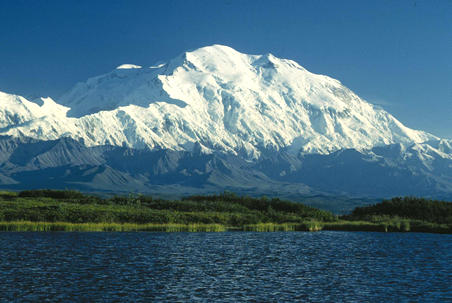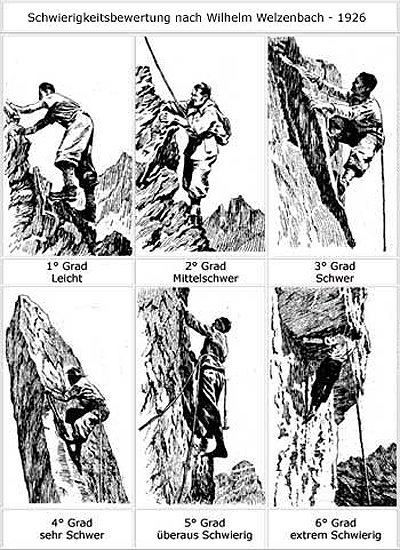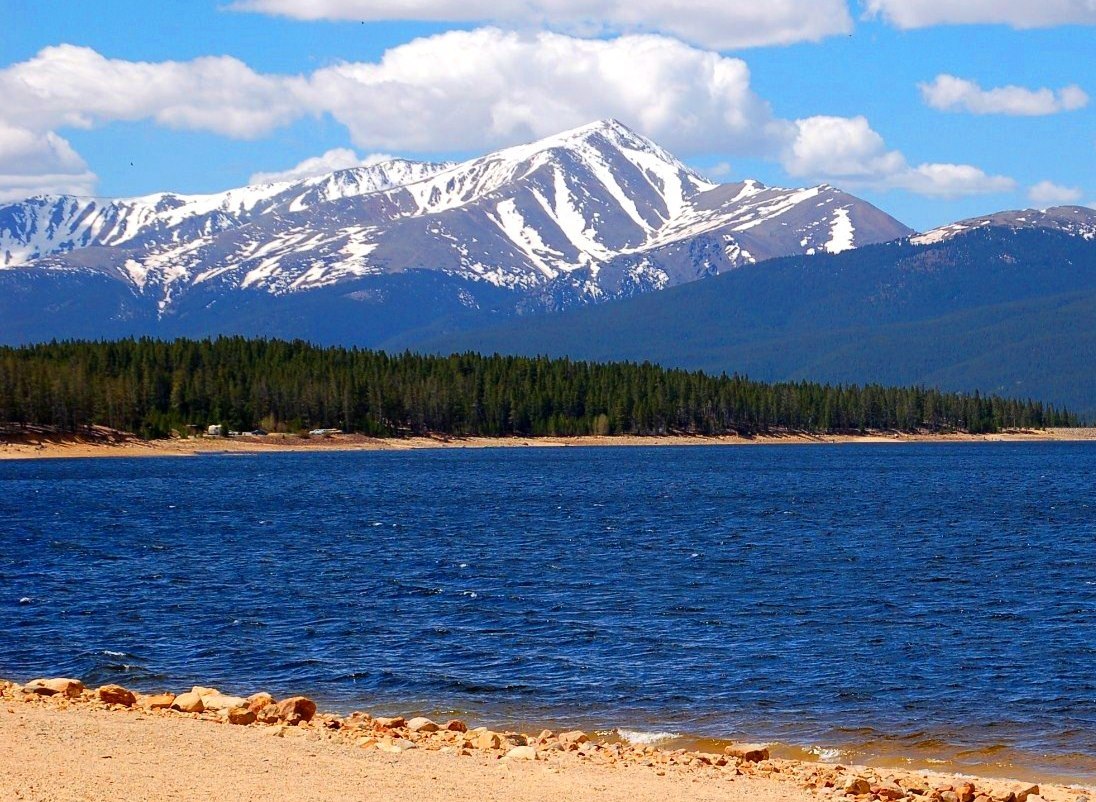|
Blanca Peak
Blanca Peak (Navajo: ) is the fourth highest summit of the Rocky Mountains of North America and the U.S. state of Colorado. The ultra-prominent peak is the highest summit of the Sierra Blanca Massif, the Sangre de Cristo Range, and the Sangre de Cristo Mountains. The fourteener is located north by east ( bearing 9°) of the Town of Blanca, on the drainage divide separating Rio Grande National Forest and Alamosa County from the Sangre de Cristo Land Grant and Costilla County. The summit is the highest point of both counties and the entire drainage basin of the Rio Grande. Below the steep North Face of Blanca Peak two live Glaciers once developed, until extinction sometime after 1903. North & South Blanca Glaciers were located at 37° 35N.,longitude 105° 28W. Blanca Peak is higher than any point in the United States east of its longitude.The elevation of Blanca Peak includes an adjustment of +1.754 m (+5.75 ft) from NGVD 29 to NAVD 88. The Blanca Peak T ... [...More Info...] [...Related Items...] OR: [Wikipedia] [Google] [Baidu] |
List Of The Highest Major Summits Of North America
The following sortable table comprises the 401 Summit, mountain peaks of North America, greater North AmericaThis article defines North America, greater North America as the portion of the Continent, continental landmass of the Americas extending westward and northward from the Isthmus of Panama plus the Island, ocean islands surrounding that landmass. This article defines the ocean islands of greater North America to include the Island#Continental islands, coastal islands of Geography of North America, North America, the Caribbean, islands of the Caribbean Sea, the Lucayan Archipelago, the List of islands of Greenland, islands of Greenland (Greenland, Kalaallit Nunaat), the List of islands of Canada, islands of Canada, and the List of islands of Alaska, islands of Alaska. The Hawaiian Islands are not included because they are considered part of Oceania. with at least of elevation and at least of topographic prominence.This article defines a significant summit as a summit wi ... [...More Info...] [...Related Items...] OR: [Wikipedia] [Google] [Baidu] |
Grade (climbing)
In rock climbing, mountaineering, and other climbing disciplines, climbers give a grade to a climbing route or boulder problem, intended to describe concisely the difficulty and danger of climbing it. Different types of climbing (such as sport climbing, bouldering or ice climbing) each have their own grading systems, and many nationalities developed their own, distinctive grading systems. There are a number of factors that contribute to the difficulty of a climb, including the technical difficulty of the moves, the strength, stamina and level of commitment required, and the difficulty of protecting the climber. Different grading systems consider these factors in different ways, so no two grading systems have an exact one-to-one correspondence. Climbing grades are inherently subjective.Reynolds Sagar, Heather, 2007, ''Climbing your best: training to maximize your performance'', Stackpole Books, UK, 9. They may be the opinion of one or a few climbers, often the first ascensioni ... [...More Info...] [...Related Items...] OR: [Wikipedia] [Google] [Baidu] |
Blanca, Colorado
The Town of Blanca is a Statutory Town located in Costilla County, Colorado, United States. The town population was 322 at the 2020 census. Blanca is located in the enormous San Luis Valley. History The town, named for Blanca Peak, was founded in August 1908 from a land lottery in the San Luis Valley of south central Colorado. It was incorporated in 1909. In the mid-1990s Polish settlers set up shop at the Red Rocks General Store selling liquor, beer, polish sausages, and other eastern European goods. Blanca is the region's main supplier of bilberry syrup. Blanca is known for elk hunting and alpine trout fishing. Geography Blanca is at (37.440569, -105.509901) in the east of the San Luis Valley and northern Costilla County. At the 2020 United States Census, the town had an area of , all of it land. The town lies along U.S. Route 160, east of Alamosa and west of Walsenburg. The region has a cool, dry climate, with 107 frost-free days each year. Temperatures range from to ... [...More Info...] [...Related Items...] OR: [Wikipedia] [Google] [Baidu] |
Absolute Bearing
In navigation, bearing or azimuth is the horizontal angle between the direction of an object and north or another object. The angle value can be specified in various angular units, such as degrees, mils, or grad. More specifically: * Absolute bearing refers to the angle between the magnetic north (''magnetic bearing'') or true north (''true bearing'') and an object. For example, an object to due east would have an absolute bearing of 90 degrees. Thus, it is the same as azimuth.U.S. Army, ''Advanced Map and Aerial Photograph Reading'', Headquarters, War Department, Washington, D.C. (17 September 1941), pp. 24-2/ref> * #Relative, Relative bearing refers to the angle between the craft's forward direction (heading) and the location of another object. For example, an object relative bearing of 0 degrees would be immediately in front; an object relative bearing 180 degrees would be behind. Bearings can be measured in mils, points, or degrees. Thus, it is the same as an ''azimut ... [...More Info...] [...Related Items...] OR: [Wikipedia] [Google] [Baidu] |
Fourteener
In the mountaineering parlance of the Western United States, a fourteener is a mountain peak with an elevation of at least . The 96 fourteeners in the United States are all west of the Mississippi River. Colorado has the most (53) of any single state; Alaska is second with 29. Many peak baggers try to climb all fourteeners in the contiguous United States, one particular state, or another region. __TOC__ Qualification criteria The summit of a mountain or hill may be measured in three principal ways: #Topographic elevation is the height of the summit above a geodetic sea level.All elevations in the 48 contiguous United States include an elevation adjustment from the National Geodetic Vertical Datum of 1929 (NGVD 29) to the North American Vertical Datum of 1988 (NAVD 88). For further information, please see this United States National Geodetic Surveybr>noteIf the elevation or prominence of a summit is calculated as a range of values, the arithmetic mean is shown. #Topo ... [...More Info...] [...Related Items...] OR: [Wikipedia] [Google] [Baidu] |
Ultra-prominent Peak
An ultra-prominent peak, or Ultra for short, is a mountain summit with a topographic prominence of or more; it is also called a P1500. The prominence of a peak is the minimum height of climb to the summit on any route from a higher peak, or from sea level if there is no higher peak. There are approximately 1,524 such peaks on Earth. Some well-known peaks, such as the Matterhorn and Eiger, are not Ultras because they are connected to higher mountains by high cols and therefore do not achieve enough topographic prominence. The term "Ultra" originated with earth scientist Steve Fry, from his studies of the prominence of peaks in Washington in the 1980s. His original term was "ultra major mountain", referring to peaks with at least of prominence. Distribution Currently, 1,518 Ultras have been identified above sea level: 639 in Asia, 356 in North America, 209 in South America, 120 in Europe (including 12 in the Caucasus), 84 in Africa, 69 in Oceania, and 41 in Antarctica. Man ... [...More Info...] [...Related Items...] OR: [Wikipedia] [Google] [Baidu] |
North America
North America is a continent in the Northern Hemisphere and almost entirely within the Western Hemisphere. It is bordered to the north by the Arctic Ocean, to the east by the Atlantic Ocean, to the southeast by South America and the Caribbean Sea, and to the west and south by the Pacific Ocean. Because it is on the North American Plate, North American Tectonic Plate, Greenland is included as a part of North America geographically. North America covers an area of about , about 16.5% of Earth's land area and about 4.8% of its total surface. North America is the third-largest continent by area, following Asia and Africa, and the list of continents and continental subregions by population, fourth by population after Asia, Africa, and Europe. In 2013, its population was estimated at nearly 579 million people in List of sovereign states and dependent territories in North America, 23 independent states, or about 7.5% of the world's population. In Americas (terminology)#Human ge ... [...More Info...] [...Related Items...] OR: [Wikipedia] [Google] [Baidu] |
Rocky Mountains
The Rocky Mountains, also known as the Rockies, are a major mountain range and the largest mountain system in North America. The Rocky Mountains stretch in straight-line distance from the northernmost part of western Canada, to New Mexico in the southwestern United States. Depending on differing definitions between Canada and the U.S., its northern terminus is located either in northern British Columbia's Terminal Range south of the Liard River and east of the Trench, or in the northeastern foothills of the Brooks Range/ British Mountains that face the Beaufort Sea coasts between the Canning River and the Firth River across the Alaska-Yukon border. Its southernmost point is near the Albuquerque area adjacent to the Rio Grande rift and north of the Sandia–Manzano Mountain Range. Being the easternmost portion of the North American Cordillera, the Rockies are distinct from the tectonically younger Cascade Range and Sierra Nevada, which both lie farther to its west. The ... [...More Info...] [...Related Items...] OR: [Wikipedia] [Google] [Baidu] |
List Of Mountain Peaks Of The Rocky Mountains
This article comprises three sortable tables of major mountain peaksThis article defines a significant summit as a summit with at least of topographic prominence, and a major summit as a summit with at least of topographic prominence. All summits in this article have at least 500 meters of topographic prominence. An ultra-prominent summit is a summit with at least of topographic prominence. of the Rocky Mountains of North America. The summit of a mountain or hill may be measured in three principal ways: #The topographic elevation of a summit measures the height of the summit above a geodetic sea level.All elevations in the 48 states of the contiguous United States include an elevation adjustment from the National Geodetic Vertical Datum of 1929 (NGVD 29) to the North American Vertical Datum of 1988 (NAVD 88). For further information, please see this United States National Geodetic Surveybr>noteIf the elevation or prominence of a summit is calculated as a range of ... [...More Info...] [...Related Items...] OR: [Wikipedia] [Google] [Baidu] |
Navajo Language
Navajo or Navaho (; Navajo: or ) is a Southern Athabaskan language of the Na-Dené family, through which it is related to languages spoken across the western areas of North America. Navajo is spoken primarily in the Southwestern United States, especially on the Navajo Nation. It is one of the most widely spoken Native American languages and is the most widely spoken north of the Mexico–United States border, with almost 170,000 Americans speaking Navajo at home as of 2011. The language has struggled to keep a healthy speaker base, although this problem has been alleviated to some extent by extensive education programs in the Navajo Nation, including the creation of versions of the films Finding Nemo and Star Wars dubbed into Navajo. The United States in World War II used the Navajo language to develop a system of code talkers to relay messages that could not be cracked. Navajo has a fairly large phoneme inventory, including several uncommon consonants that are not found in ... [...More Info...] [...Related Items...] OR: [Wikipedia] [Google] [Baidu] |
Huerfano County, Colorado
Huerfano County (; ) is a county located in the U.S. state of Colorado. As of the 2020 United States Census, 2020 census, the population was 6,820. The county seat is Walsenburg, Colorado, Walsenburg. The county, whose name comes from the Spanish language, Spanish ''huérfano'' meaning "orphan", was named for the Huerfano Butte, a local landmark. The area of Huerfano County boomed early in the 1900s with the discovery of large coal deposits. After large scale World War II coal demand ended in the 1940s Walsenburg and Huerfano saw a steady economic decline through 2015. Historical Huerfano County was one of the original 17 counties created by the Territory of Colorado on November 1, 1861, and was originally larger than its present size. On November 2, 1870, the Colorado General Assembly created Greenwood County, Colorado Territory, Greenwood County from former Cheyenne and Arapaho tribal land and the eastern portion of Huerfano County. There are countless reports of vast New Spa ... [...More Info...] [...Related Items...] OR: [Wikipedia] [Google] [Baidu] |
Tripoint
A tripoint, trijunction, triple point, or tri-border area is a geographical point at which the boundaries of three countries or subnational entities meet. There are 175 international tripoints as of 2020. Nearly half are situated in rivers, lakes or seas. On dry land, the exact tripoints may be indicated by markers or pillars, and occasionally by larger monuments. Usually, the more neighbours a country has, the more international tripoints that country has. China with 16 international tripoints and Russia with 11 to 14 lead the list of states by number of international tripoints. Other countries, like Brazil, India and Algeria, have several international tripoints. Argentina has four international tripoints. South Africa, Pakistan and Nigeria have three international tripoints while Bangladesh and Mexico have only one. Within Europe, landlocked Austria has nine tripoints, among them two with Switzerland and Liechtenstein. Island countries, such as Japan and Australia, have no ... [...More Info...] [...Related Items...] OR: [Wikipedia] [Google] [Baidu] |


.jpg)



